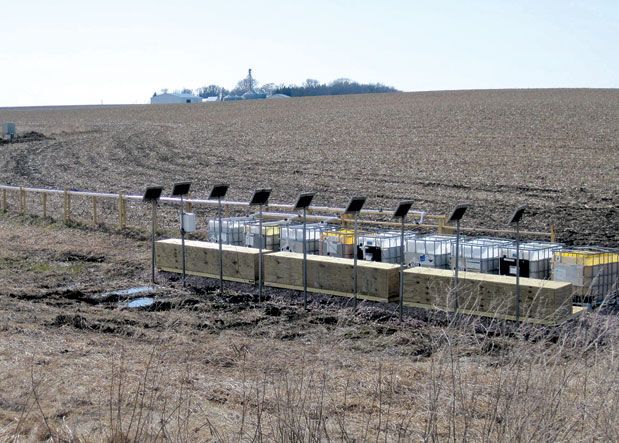Denitrification in a Box
Published on by Marina A, Previously Key Account and Content Manager at AquaSPE AG in Technology
Dr. Andry Ranalvoson, University of Minnesota researcher, created bioreactors for filtering runoff in plastic pallet tanks, saving farming land.
 Plastic boxes were filled with wood chips, gravel, chemicals and pesticides to create an environment for microbes to denitrify water runoff.
Plastic boxes were filled with wood chips, gravel, chemicals and pesticides to create an environment for microbes to denitrify water runoff.
Elevated nitrate levels in water create unfavorable conditions for aquatic insects and fish.
Nitrates are used by plants for their growth, however too much nitrates in soil can cause negative effects of the plants.
Denitrification happens in waterlogged soil with enough organic matter which provides energy for bacteria. These boxes provide good conditions for denitrifying bacteria.
The microbes consume carbon from wood chips (organic matter) and nitrates from water and therefore purify.
Natural bacteria, present in the water, uses carbon from wood chips (organic matter) and they breathe the nitrates from the water.
 Denitrification in these boxes prevents water bodies and soil from getting polluted.
Denitrification in these boxes prevents water bodies and soil from getting polluted.
97% of nitrate is removed in some cases. The boxes were most efficient in rainy months in spring and summer and lack of rain and the temperature drop reduced the productivity.
In addition to nitrate reduction, phosphorous levels are regulated by adding corn cobs, crushed concrete, limestone, steel slag and a steady drip of acetate.
Different carbon sources had different effect on nutrients removal - steel slag removed the most nitrogen – 34% and crushed concrete removed most phosphorous – 37%.
These bioreactor boxes could have great impact in improving water quality and soil preservation.
Media
Taxonomy
- Water
- Soil
- Microorganism
- Bioreactor
- Nutrients Recovery
- Purification
- Water Treatment Solutions
- Water Quality
- Hydrodynamics & Water Quality
- Water Quality Management
- Hydrology Nutrient Cycling
- Water Conservation
- Pesticides
- Fertilizers and Pesticides
- Soil Management
- Soil Conservation
- Pesticides
- water treatment
- Nutrient Recovery & Reuse
- Water
- Water Purification
- Water Conservation
1 Comment
-
This is very interesting, I was wondering if there was any calculation after the results of the amount of carbon sources (i.e. wood chips) that need to be replaced and how often based on nitrate levels and water flow.